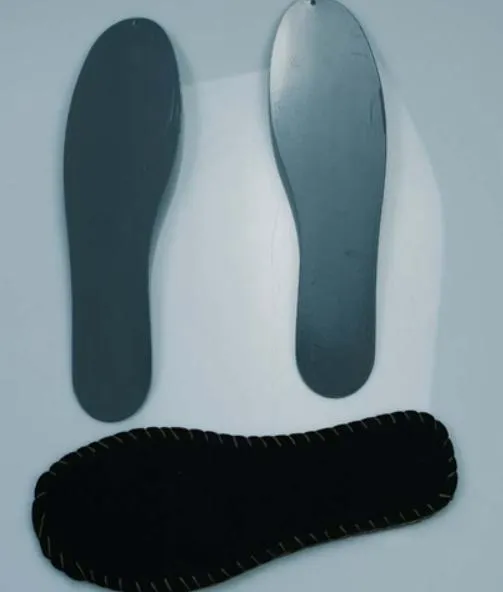- Phone:+86-17331948172 +86-0319-8862898
- E-mail: inquiry@puxingclamp.com
Jun . 27, 2025 09:33 Torna à a lista
Shoe Steel Midsole Basics
The Shoe Steel Midsole is a critical safety component in industrial and construction footwear, designed to protect workers from punctures, impacts, and compression injuries. Unlike standard insoles, a steel midsole with stainless steel or carbon steel provides a rigid yet flexible barrier that shields the foot from sharp objects like nails, glass, and metal debris. Whether integrated as a full steel Mid sole or combined with composite materials, these protective layers ensure long-lasting durability and safety in hazardous work environments.
This comprehensive guide explores the fundamentals of Shoe Steel Midsoles, including their materials, benefits, and applications. We’ll also compare different types, such as steel midsole with stainless steel variants, and discuss how they outperform alternatives like Kevlar in certain conditions. By the end, you’ll understand why a steel Mid sole is indispensable for workers in construction, manufacturing, and heavy industries.

The definition of a Shoe Steel Midsole
A Shoe Steel Midsole is a protective layer embedded within safety footwear, positioned between the outsole and insole. Its primary function is to prevent sharp objects from penetrating the sole and injuring the foot. Unlike softer materials, a steel midsole with stainless steel or hardened carbon steel offers superior resistance to punctures while maintaining structural integrity under heavy loads.
Key Features of a Steel Midsole
Material: Typically made from stainless steel or carbon steel .
Durability: Resists bending, cracking, and corrosion.
Protection Level: Meets safety standards like EN ISO 20345 .
Flexibility: Engineered to allow natural foot movement while maintaining rigidity.
Weight: Slightly heavier than composite alternatives but offers better protection.
Types of Steel Mid soles and Their Applications
Not all steel midsoles are the same—different designs cater to specific workplace hazards. Below, we explore the most common types, including the steel midsole with stainless steel variant.
1. Full-Length Steel Midsole
Covers the entire footbed for maximum protection.
Best for construction sites with scattered nails and metal debris.
Slightly heavier but provides uniform defense.
2. Partial Steel Strips (Metatarsal Guard)
Focuses on high-risk areas (ball of the foot, arch).
Lighter than full steel Mid sole options.
Common in electrician boots where flexibility is crucial.
3. Stainless Steel Midsole
The steel midsole with stainless steel offers rust resistance.
Ideal for wet or chemical-exposed environments (oil rigs, food processing).
More expensive but lasts longer in corrosive conditions.
4. Carbon Steel Midsole
Harder than stainless steel, providing better puncture resistance.
Requires protective coatings to prevent rust.
Preferred in dry industrial settings.
5. Hybrid Steel-Composite Midsole
Combines steel Mid sole with Kevlar or fiberglass.
Balances weight and protection.
Used in tactical and military footwear.
Benefits of Using a Steel Mid sole in Safety Shoes
Why should workers choose a Shoe Steel Midsole over other materials? Here are the key advantages:
1. Unmatched Puncture Resistance
A steel midsole with stainless steel can withstand nails, glass shards, and metal scraps.
Far superior to plastic or fiber-based alternatives.
2. Long-Term Durability
Steel doesn’t degrade like Kevlar or composites.
Maintains integrity even after years of heavy use.
3. Enhanced Stability and Support
Reduces foot fatigue on hard surfaces.
Distributes weight evenly, preventing strain injuries.
- Compliance with Safety Standards
Meets EN ISO 20345 and ASTM F2413 for puncture resistance.
Required in high-risk industries like construction and mining.
5. Heat and Chemical Resistance
A steel Mid sole won’t melt or deform under extreme heat.
Stainless steel variants resist acids, oils, and solvents.
FAQs About Shoe Steel Midsoles
How does a steel Mid sole compare to Kevlar?
While Kevlar is lighter, a Shoe Steel Midsole provides stronger puncture resistance and lasts longer in harsh conditions. Kevlar is better for lightweight needs, but steel is essential for heavy industrial work.
Can a steel Mid sole rust over time?
Standard carbon steel midsoles can rust if exposed to moisture. However, a steel midsole with stainless steel is corrosion-resistant, making it ideal for wet environments.
Are steel Mid soles uncomfortable?
Modern designs incorporate ergonomic shaping, so a steel Mid sole offers both protection and comfort. Break-in periods may be needed, but advanced footwear minimizes discomfort.
How often should steel Mid soles be replaced?
If the footwear shows visible damage (dents, rust, or flexibility changes), replace it immediately. Otherwise, most last 2–3 years with proper care.
Do steel Mid soles conduct electricity?
Yes, steel conducts electricity, so electricians should use composite or non-metallic midsoles unless the footwear is specifically rated for electrical hazards.
A Shoe Steel Midsole remains the gold standard for foot protection in high-risk industries. Whether opting for a steel midsole with stainless steel for corrosion resistance or a traditional steel Mid sole for maximum durability, workers benefit from unmatched puncture protection and long-term reliability.
By understanding the basics of Shoe Steel Midsoles, employers and workers can make informed choices that enhance workplace safety without compromising comfort. Stay protected—choose the right steel midsole for your needs.
-
The Impact of Automation on Crimp Hose Clamp Kit Production
NewsAug.08,2025
-
Quality Control Measures in Precision Stainless Steel Strip Production
NewsAug.08,2025
-
Market Analysis of China's Mini Hose Clamp Industry
NewsAug.08,2025
-
How Stainless Steel Strip Enhances the Durability of Hose Clamps
NewsAug.08,2025
-
Customization Options for American Type Radiator Hose Clamp
NewsAug.08,2025
-
Compatibility and Installation Best Practices for Stainless Steel Hose Clips
NewsAug.08,2025




